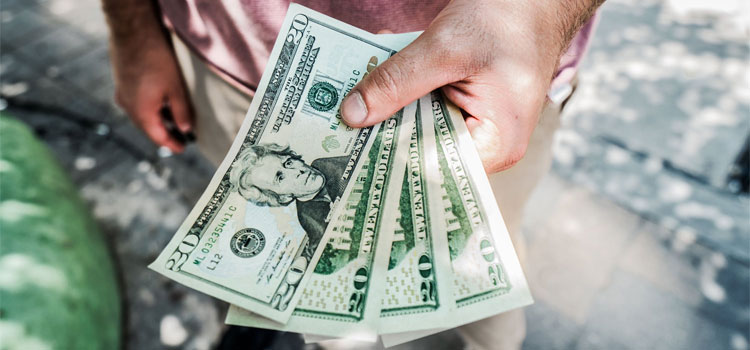Patreon is a crowd-funding membership platform, which means you can make money with Patreon if people like you enough to pay and subscribe to your channel in order to access your content.
- Inbox Dollars - Get paid to check your email. $5 bonus just for signing up!
- Survey Junkie - The #1 survey site that doesn't suck. Short surveys, high payouts, simply the best.
- Nielsen - Download their app and get paid $50!
Compared to YouTube, Patreon is a bit underrated as a money-making platform.
However, it is one of the most highest-paying platforms for the creative crowd online.
There are over 100,000 creators on Patreon, with the top tier earning salaries of $2 million monthly (or more).
These creators range from YouTubers to writers, musicians, podcasters, comic artists, videographers, online gamers, and other creatives with interesting skills to share with the world.
Today, you’ll learn how you can make money with Patreon: how Patreon works, how it’s different from YouTube, and who earns the most on this platform so you can be inspired and encouraged.
How Does Patreon Work?
Many YouTube stars who have made money from YouTube embraced YouTube and Patreon equally.
But the original way people earned money through YouTube was via AdSense.
A viewer must watch an ad for 30 seconds, or click the ad featured before or somewhere in the middle of a YouTuber’s video. Only then will the YouTuber earn money.
It sounds simple but YouTubers don’t earn a lot this way. It would take about 1,000 views for a YouTuber to earn $10 to $20.
Unless a YouTuber’s channel has millions of viewers, earning through YouTube’s AdSense would take a lot of time, effort, and content.
To complement this income generation, many YouTubers took to Patreon and made it their second home.
In Patreon, musicians, singers, painters, writers, video game writers, and other creators were able to set subscription fees in exchange for VIP-style access to their work.
Several types of fan support at Patreon exist:
- Monthly subscription – Fans of a creator pay a monthly subscription fee in exchange for freebies and insider news (sometimes being first to listen to a new song, asked opinions about a new comic character, and so on). Depending on your Patreon plan, you can create tiers of memberships with various monthly subscriptions. For instance, you can set entry-level memberships at $3/month, a mid-level tier at $10/month, and a high-level tier at $20/month.
- Per-creation campaign – Let’s say an independent ukulele player wants to release a new album, but has no funds to do so. She then creates a campaign on Patreon specifically for this project. Fans can support this album one-off without having to pay a monthly subscription fee.
- Donation – If you’re a fan and you donate money to a creator you like, you’re in control of how much you want to give, and when you want to send your donation. You don’t need to be a paying subscriber or a support of a campaign to donate. The catch is that donations often do not include freebies. Of course this isn’t set in stone, since the creator can still send gifts your way as a donor.
You might think: why go to Patreon, if YouTube is already the biggest video-sharing platform on the planet?
Here are several reasons why…
Patreon vs. YouTube Channel Membership
- Patreon filled a void – At the time of Patreon’s launch in 2013, YouTube has not yet launched its own Channel Membership program (this came out in mid-2018). Those who have started out at Patreon’s membership service stuck with it even after YouTube’s launch.
- Patreon takes a smaller percentage – Patreon is still a service, so it charges its users for using the platform by taking a percentage of their monthly income. Depending on which Patreon plan you subscribe to, they get 5% (for Lite), 8% (for Pro), or 12% (for Premium). This is aside from the payment processing fee. It sounds more Compared to YouTube’s massive 30% cut, Patreon is more friendly to its users.
- Patreon’s terms do not change drastically – Google, the mother company of YouTube, is notorious for updating its terms regularly. These terms include changes with monetization, which can be off-putting to YouTubers.
- No minimum patrons required – At Patreon, there were no requirements regarding the number of patrons upon sign-up. With YouTube’s Channel Membership, your channel had to have at least 100,000 subscribers.
When it comes to pledges of supporters, Patreon and YouTube have similar starting points.
The starting price for YouTube channel memberships is $0.99/month at YouTube Channel Membership, while the starting price at Patreon is $1/month.
How Much Can You Earn With Patreon?
It has been proven that you can make money with Patreon, but it’s simply impossible to state an estimated income you can get from Patreon mainly because the number of supporters and how much they’re willing to shell out are different among Patreon users.
Below are a few of the top creators making the most money on Patreon, according to Graphtreon:
- True Crime Obsessed (Earns an estimated $103K to $293K per month with over 38K patrons) – True crime podcast hosted by Gillian Pensavalle and Patrick Hinds
- Chapo Trap House (Earns more than $164,000 per month with over 36K patrons) – Political comedy podcast by hosts Matt Christman, Will Menaker, Virgil Texas, Felix Biederman, and Ambe A’Lee Frost
- Yagami Yato (Earns an estimated $49K to $289K per month with over 33K patrons) – NSFW Vocal artist, ASMR, and interactive fiction
- DarkCookie (Earns more than $68K per month with over 25K patrons) – Creator of NSFW game Summertime Saga
- Brandon Stanton (Earns an estimated $38K to $197K per month with over 20K patrons) – Photographer and creator of the Humans of New York photo series on social media and now published as books
- Amanda Palmer (Earns an estimated $18K to $136K per month with over 14K patrons) – Singer, musician, podcaster, and blogger
- CGP Grey (Earns more than $42K per month with over 13K patrons) – YouTuber with educational explanatory videos on a wide variety of subjects, mostly through animation
As you can see from these creators, it is definitely possible to make money with Patreon no matter what type of content you publish as long as you have followers (or in this case: “patrons”).
As a creator, you will dictate the tiers (membership levels) and the corresponding benefits for every tier.
You can add multiple tiers, as well as multiple benefits. And choose if you’d like to include tangible items, such as t-shirts, stickers, CDs, and various other merch or digital items, such as access to a livestream or a copy of an unreleased song.
No joke. Here are the fastest ways to make easy money online. Click here to see how.
Who Can Make Money with Patreon?
Anyone can open up a Patreon account.
However, once you begin earning money from the subscriptions, Patreon gets a cut from your monthly income.
As I’ve mentioned, the percentage will depend on what type of Patreon plan you chose: Lite (5%), Pro (8%), or Premium (12%).
The pricier the Patreon plan you choose, the more add-ons you get, such as detailed analytics, accounts for team members, a dedicated partner manager, and so on.
If you’re planning to join Patreon, but is not sure if you’d fit in, you’d be surprised at the impressive range of Patreon users there are.
To give you an idea, here are some real Patreon users and how they’re using this platform to earn money online:
1. Podcasters
We know crowdfunding is a legitimate way of making money from podcasts.
You don’t need to be a professor, public speaker, or celebrity to create a podcast. As long as you’re creative, smart, and entertaining enough, people will naturally want to listen to you and hear more.
Aside from the Chapo Trap House, The Last Podcast on the Left is another popular podcast hosted by friends Ben Kissel, Marcus Parks, and Henry Zebrowski.
Since 2011, these guys have been releasing 1-hour podcasts about the horrors of the world, both imagined and real. Think zombies, serial killers, and so on. While Zebrowski is a comedian on his own right, his co-hosts mostly found massive fame through the podcast.
2. Teaching and Education
There is massive potential for teaching at Patreon.
From musicians creating music lessons for their patrons to English teachers creating lessons for their ESL students, the possibilities are endless.
You’d find essay writing lessons, painting courses, cooking lessons, and many more.
3. Musicians
Singers and musicians are big at Patreon.
A cappella groups Pentatonix and Home Free are perfect examples of music acts that opened their world to patrons, which ultimately helped them create music, tour more places, and produce music videos.
If you’re trying to learn guitar, you can find many expert guitarists sharing their knowledge at Patreon.
You just gotta dig deeper and learn how other musicians take care of their patrons.
4. Video Creators
These group of creators bring a wide range of content to the world.
Some share educational videos like cooking or experiments, while others stick with pranks, family funny videos, and so on.
You can make money from home and it doesn't have to be challenging. Click here to see how.
5. Visual Artists
The internet threatened traditionally-beloved professions like comic book artists and other similar fields.
But the technology, tools like drawing tablets and software, and services like Patreon paved the way for visual artists to make money online.
Today, exceptionally-talented artists like Brian Gordon (of Fowl Language) and Nick Seluk (of The Awkward Yeti) are able to do what they love the most and earn a living from their comics too!
Thanks, in part, of their fans who helped bring money to the artists by buying their merch, joining Kickstarter campaigns, or subscribing to their Patreon.
6. Writers
The cool thing about Patreon is that creators can offer their content in phases, which is ideal for authors working on their novels.
They can choose to be “paid” as they go.
Journalists also have a nice little home here, especially those with very specific niches.
7. Game creators
Video game creators join Patreon and release updates and sneak peaks of their games to their patrons.
Some go as far as asking their patrons to help shoulder the game development bill.
Watching online gamers do their thing (and narrate what their characters are doing on screen) has been around for several years and who wouldn’t want to get paid to play video games?
It’s no wonder these popular names from the gaming industry are using Patreon to share more content in exchange for income from monthly subscriptions.
8. Communities and Organizations
Of course, organizations (whether private or non-profit) and communities can turn Patreon into their go-to fundraising headquarters.
Patreon was made exactly to unite a community of people into one (or more) goals.
Tips to Be Successful on Patreon
Making money on Patreon isn’t a set-it-and-forget-it type of task. It involves constant work on your end to keep your existing patrons, get new ones, and create new content.
Here are a few tips for success on this platform.
1. Carefully consider whether signing up as a Patreon creator is a good fit for you.
As I keep stressing above, anyone can sign up on Patreon and start making money.
But just because you can doesn’t always mean you should.
First, compute your overhead costs. If whatever you’re creating requires expensive raw materials, labor, or any other upfront costs, you might want to reconsider having Patreon as your main source of income.
Second, you need to come into Patreon with a fan base, whether from social media, your regular clients, or yes, even YouTube.
Patreon can help you get funded, but without enough online followers opening their wallets to support you, your Patreon campaign may go unfunded.
Lastly, you need to be able to handle enormous pressure.
Having a virtual line of patrons outside your virtual door, waiting for your next creation to drop, and being vocal about it (after all, they invested in your work) will either motivate you to get off your behind and start working.
Or the overwhelming pressure can break your resolve.
Know yourself enough to decide whether you can handle it.
2. Set achievable goals.
The best thing to avoid reneging on a promise is to not promise anything you can’t deliver.
Lots of sites will advise you to create multiple tiers of support, starting from entry-level, 1 to 3 mid-levels, and a limited VIP tier open only for a number of patrons. These multiple tiers would naturally have different rewards or perks.
And I’m here to tell you to set reasonable goals for yourself in terms of whether you’re able to deliver these perks.
Will you be able to meet the demand for content if you ever reach thousands of patrons?
Ask yourself this question constantly when you’re planning out your tiers and rewards.
3. Constantly be creating high-quality content.
Even if you were able to optimize your tiers, promote your Patreon page, and increase the number of your patrons, you’re not going to make money on Patreon for long if your content is less than your best.
Your followers became patrons because they’re fans of the free content you’ve already put out there. Asking for their monetary support and then delivering goods that are far from what they’ve come to expect is the fastest way to ensure that monetary support dries up.
4. Keep creating for non-patrons
Speaking of free content, suppress the urge to make all your content exclusive to patrons.
You’ll want to continue growing your audience outside of Patreon so you can reach more potential patrons who will invest in your project.
And they won’t do it if they don’t know what you’re about.
5. Keep an attitude of gratitude for your patrons.
While there is no bigger “thank you” than delivering what your promised, it’s still a good idea to thank your patrons in many different ways.
This is especially important during the early days, when only a few of them liked your content enough to have faith in you and invest in you.
Personalized messages and special perks to your early patrons will go a long way in promoting goodwill and ensuring you have loyal patrons.
At the same time, new patrons need to feel appreciated, too.
You might not be able to send personalized messages after a certain point, but never forget to thank them and acknowledge their contribution somehow, such as a special shoutout in your work.
Final Thoughts on Making Money With Patreon
Wouldn’t it be nice if creating content sold itself and paid for itself so you can keep doing it.
Unfortunately, it can’t.
Fortunately, making money on Patreon so you can sustain your passion is now possible.
I hope this article helped you make up your mind if Patreon is a good fit for you and inspired you with Patreon success stories.
Are you signing up for Patreon? Or are you already there and loving it? Tell us your stories (and maybe drop your Patreon link?) in the comments!





